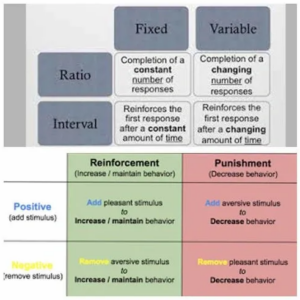
I was watching a TSA instructor working with a student and his canine. The dog was searching passengers waiting in a moving queue through those retractable stanchions. The handler had to approach each passenger as a potential target and continue to search in this scenario for up to 20 minutes. The student was a little flustered at the repetitive blank searches, to which the instructor said, “Welcome to the rest of your life as a canine handler!” We all love contingent reinforcement when working with animals. Do one behavior or a part of a behavior and get rewarded. The handler feels good and the dog feels good. The dog feels good based on being rewarded and the handler feels good because they are part of the solution. The problem is that this is not the real world. This is especially true in the detection dog. Not every passenger they search is carrying something the dog can detect and not every piece of luggage pays a reward. In the real world the dog is rewarded (mostly in training) in a random/intermittent reinforcement schedule. When trained correctly it is one of the strongest reinforcement schedules that exist and this is what makes people sit a slot machines for hours on end. When working with your puppy, you must balance the original lessons (shaping early behavior with contingent reward) with the desired end result (random or intermittent reward). Too often I see people with the best intentions constantly searching with the dog and every search ends with a “find”. This error in training is often how dogs shape nonproductive responses or false alarms (see https://www.sciencedirect.com/science/article/pii/S0168159115000611) The same problem works with developing environmental stability, where every small effort is rewarded by the handler and the dog becomes dependent on the handler to negotiate environmental obstacles. Some of this is overcome by dogs with extreme genetic expressions of reward object desire or extreme environmental boldness. However, even dogs with extreme genetics will not fully develop if the genes are not actuated in real world scenarios. An independent dog, self-motivated to find target odor, who negotiates environment distractions and obstacle to get closer to the odor source is the goal you want for your dog.

